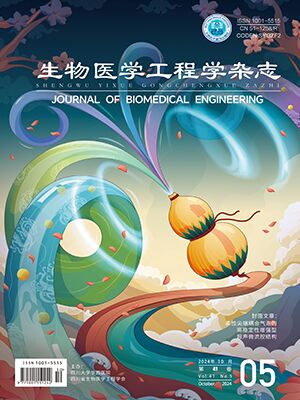| 1. |
VINEIS P, WILD C P. Global cancer patterns:causes and prevention[J]. Lancet, 2014, 383(9916):549-557.
|
| 2. |
CAO Lu, ZHOU Yanming, ZHAI Beibei, et al. Sphere-forming cell subpopulations with cancer stem cell properties in human hepatoma cell lines[J]. BMC Gastroenterol, 2011, 11:71-81.
|
| 3. |
MATAR P, ALANIZ L, ROZADOS V, et al. Immunotherapy for liver tumors:present status and future prospects[J]. J Biomed Sci, 2009, 16:27-30.
|
| 4. |
YAMASHITA T, JI Junfang, BUDHU A, et al. EpCAM-positive hepatocellular carcinoma cells are tumor-initiating cells with stem/progenitor cell features[J]. Gastroenterology, 2009, 136(3):1012-1024.
|
| 5. |
LEE T K W, CASTILHO A, CHEUNG V C H, et al. CD24+ liver tumor-initiating cells drive self-renewal and tumor initiation through STAT3-mediated NANOG regulation[J]. Cell Stem Cell, 2011, 9(1):50-63.
|
| 6. |
CALABRESE C, POPPLETON H, KOCAK M, et al. A perivascular niche for brain tumor stem cells[J]. Cancer Cell, 2007, 11(1):69-82.
|
| 7. |
KRISHNAMURTHY S, DONG Zhihong, VODOPYANOV D, et al. Endothelial cell-initiated signaling promotes the survival and self-renewal of cancer stem cells[J]. Cancer Res, 2010, 70(23):9969-9978.
|
| 8. |
CHENG Lin, HUANG Zhi, ZHOU Wenchao, et al. Glioblastoma stem cells generate vascular pericytes to support vessel function and tumor growth[J]. Cell, 2013, 153(1):139-152.
|
| 9. |
LU Jia, YE Xiang-cang, FAN Fan, et al. Endothelial cells promote the colorectal cancer stem cell phenotype through a soluble form of jagged-1[J]. Cancer Cell, 2013, 23(2):171-185.
|
| 10. |
CAMPOS M S, NEIVA K G, MEYERS K A, et al. Endothelial derived factors inhibit anoikis of head and neck cancer stem cells[J]. Oral Oncol, 2012, 48(1):26-32.
|
| 11. |
MARQUARDT J U, GALLE P R, TEUFEL A. Molecular diagnosis and therapy of hepatocellular carcinoma (HCC):an emerging field for advanced technologies[J]. J Hepatol, 2012, 56(1):267-275.
|
| 12. |
MA S. Biology and clinical implications of CD133+ liver cancer stem cells[J]. Exp Cell Res, 2013, 319(2):126-132.
|
| 13. |
YANG Zhen-fan, HO D W, NG M N, et al. Significance of CD90+ cancer stem cells in human liver cancer[J]. Cancer Cell, 2008, 13(2):153-166.
|
| 14. |
PIAO Lian-shu, HUR W, KIM T K, et al. CD133+ liver cancer stem cells modulate radioresistance in human hepatocellular carcinoma[J]. Cancer Lett, 2012, 315(2):129-137.
|
| 15. |
MA S, TANG K H, CHAN Y P, et al. miR-130b promotes CD133+ liver tumor-initiating cell growth and self-renewal via tumor protein 53-induced nuclear protein 1[J]. Cell Stem Cell, 2010, 7(6):694-707.
|
| 16. |
CHOI S A, WANG K C, PHI J H, et al. A distinct subpopulation within CD133 positive brain tumor cells shares characteristics with endothelial progenitor cells[J]. Cancer Lett, 2012, 324(2):221-230.
|
| 17. |
WU Qiuhua, GUO Rongjiao, LIN Min, et al. MicroRNA-200a inhibits CD133/1+ ovarian cancer stem cells migration and invasion by targeting E-cadherin repressor ZEB2[J]. Gynecol Oncol, 2011, 122(1):149-154.
|
| 18. |
OSKARSSON T, BATLLE E, MASSAGUE J. Metastatic stem cells:sources, niches, and vital pathways[J]. Cell Stem Cell, 2014, 14(3):306-321.
|
| 19. |
ZHU T S, COSTELLO M A, TALSMA C E, et al. Endothelial cells create a stem cell niche in glioblastoma by providing NOTCH ligands that nurture self-renewal of cancer stem-like cells[J]. Cancer Res, 2011, 71(18):6061-6072.
|
| 20. |
ZHANG Zhaocheng, DONG Zhihong, LAUXEN I S, et al. Endothelial cell-secreted EGF induces epithelial to mesenchymal transition and endows head and neck cancer cells with stem-like phenotype[J]. Cancer Res, 2014, 74(10):2869-2881.
|




